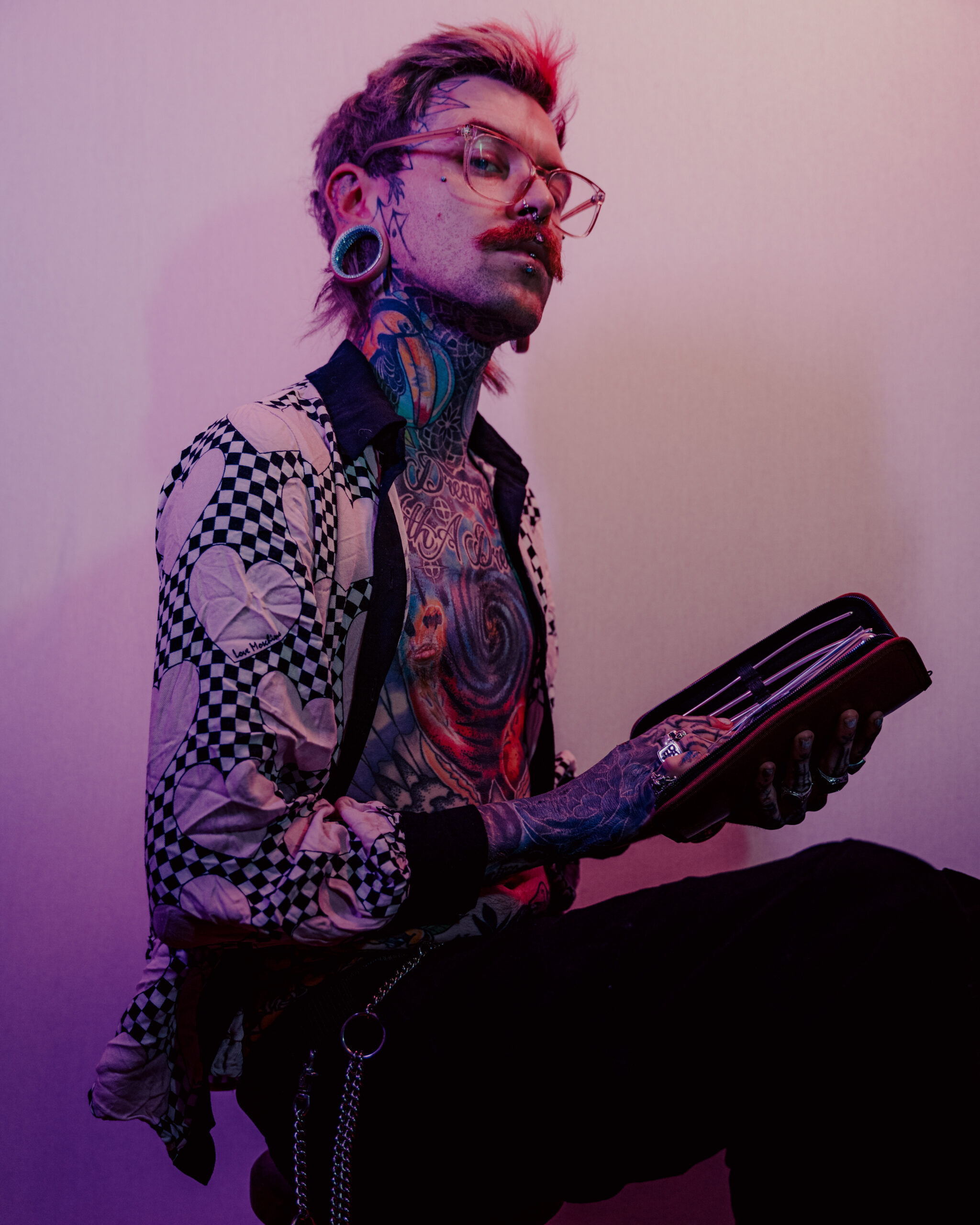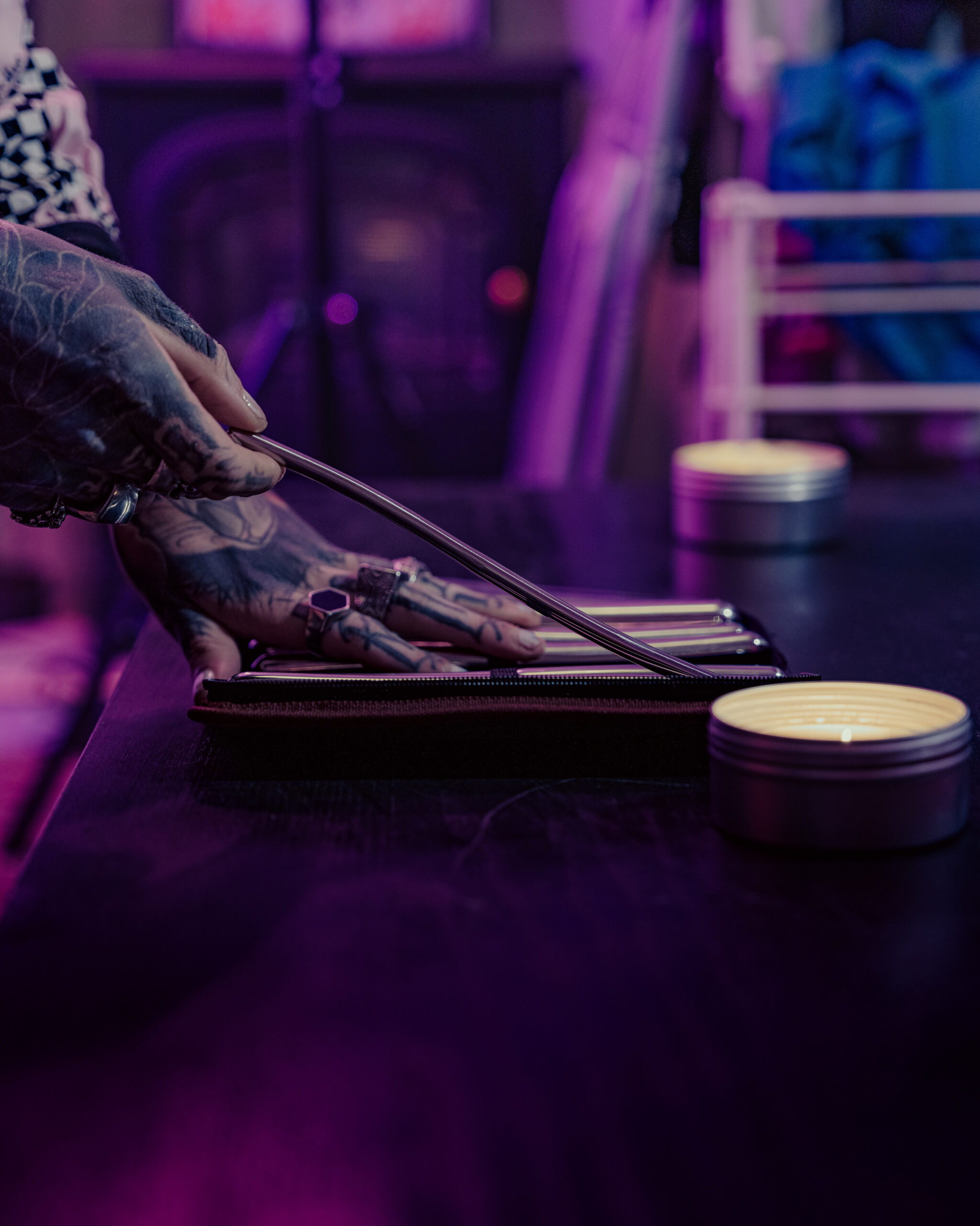The concept of greysexuality refers to a spectrum of sexual orientations that falls outside of the traditional binary framework of heterosexual and homosexual. Greysexuality acknowledges that individuals may experience varying degrees of attraction, desire, or romantic feelings towards people of different sexes, but do not necessarily identify as exclusively straight or gay.
Greysexuality is often described as an intersection of grey areas, where an individual’s sexual orientation may exist on a continuum between two poles. This perspective recognizes that human sexuality is complex and multifaceted, and that individuals’ experiences may not fit neatly into categorizable labels.
Some common characteristics associated with greysexuality include:
- Ambiguous or fluctuating attraction patterns: Individuals who identify as greysexual may experience varying levels of attraction towards people of different sexes, which can be influenced by various factors such as context, mood, or life circumstances.
- Lack of binary identification: Greysexuality often challenges traditional notions of straight and gay identities. Individuals who identify as greysexual may not feel comfortable identifying as exclusively straight or gay, instead embracing a more fluid and nuanced understanding of their attraction patterns.
- Increased awareness of power dynamics and social context: Greysexuality encourages individuals to consider the social, cultural, and historical contexts that shape their experiences of attraction and desire. This perspective highlights the importance of recognizing how societal norms, privilege, and power imbalances influence individual perceptions of sex and relationships.
- Emphasis on personal agency and self-expression: Greysexuality promotes a focus on individual autonomy and self-definition. Individuals who identify as greysexual are encouraged to explore their own desires, boundaries, and preferences without feeling constrained by societal expectations or binary norms.
The concept of greysexuality has its roots in the LGBTQ+ community, particularly among individuals who may not feel comfortable identifying as straight or gay. However, it has since evolved into a broader conversation about human sexuality that transcends traditional binary frameworks.
Greysexuality is not without controversy, however. Some critics argue that the term can be reductionist or reductive, implying that an individual’s sexual orientation can be captured by a simple label or spectrum. Others may see greysexuality as a means of avoiding or evading discussions about power dynamics and social context.
Ultimately, understanding greysexuality requires a nuanced and multifaceted approach. By recognizing the complexity and diversity of human experience, individuals can foster greater empathy, acceptance, and inclusivity in conversations about sex, relationships, and identity.
Greysexuality refers to an individual’s sexual orientation that falls outside of the traditional binary categories of straight and gay. It is a spectrum of emotions, attractions, and experiences that cannot be confined to one specific label or identity.

Greysexuality often involves a lack of strong emotions, desires, or connections with members of the opposite or same sex. This may manifest as a lack of attraction, indifference, or a neutral emotional response to potential romantic partners.
A person who identifies as greysexual may experience feelings of confusion, uncertainty, or ambivalence when it comes to their own sexuality. They may struggle to define their attractions, desires, or relationships, which can lead to feelings of self-doubt and confusion.
Greysexuality is not the same as asexuality, which refers specifically to a lack of sexual desire or attraction towards others. A person who identifies as greysexual may still experience sexual desire or attraction, but they are unable to commit emotionally or romantically to someone of the same sex.
Some common characteristics associated with greysexuality include:

- A neutral or lack of emotional response to romantic partners
- A difficulty in defining one’s own attractions or desires
- A tendency towards casual relationships or acquaintanceship rather than committed partnerships
- A sense of confusion or uncertainty when it comes to one’s own sexuality
- A lack of strong connections or attachments with others, including romantic partners
Greysexuality is a relatively new and emerging term in the LGBTQ+ community. As such, there may not be as much information, resources, or support available for individuals who identify as greysexual compared to other identities within the spectrum.
However, it’s essential to recognize that greysexuality is a legitimate aspect of human sexuality and should be acknowledged and respected. By understanding and accepting the complexities of greysexuality, we can work towards creating a more inclusive and diverse community for individuals who identify in this way.
It’s also worth noting that greysexuality can manifest differently in different people. What one person experiences as greysexual may not be the same for another individual. This highlights the importance of self-awareness, exploration, and open communication when navigating one’s own desires, attractions, and relationships.
Greysexuality is a term used to describe individuals who identify as neither exclusively heterosexual nor homosexual, but rather exist on a spectrum between the two.
The concept of greysexuality has gained significant attention in recent years, particularly among individuals who identify as being somewhere in between traditional notions of heterosexuality and homosexuality. This term attempts to describe a more nuanced and inclusive way of understanding human sexuality.
Greysexuality is often used to describe individuals who do not exclusively identify as heterosexual or homosexual, but rather exist on a spectrum between the two. These individuals may experience romantic and/or physical attraction to people of both sexes, without necessarily identifying as straight or gay. This can manifest in different ways, such as having multiple romantic partners of different genders, experiencing ambivalence towards certain gender identities, or simply not feeling strongly enough about either sex to identify with a specific label.
One of the key challenges in defining greysexuality is that it doesn’t fit neatly into traditional labels. Individuals who identify as greysexual may experience their attractions and desires differently than those who identify as straight, gay, bi, or pansexual. This can lead to a lack of clear boundaries and categorization, making it difficult for some people to understand and relate to the concept.
However, by embracing the complexity and fluidity of human sexuality, greysexuality offers a more inclusive and accepting framework for individuals who don’t conform to traditional norms. It acknowledges that human attraction and desire can be messy, multifaceted, and influenced by various factors such as personal experiences, cultural background, and individual preferences.
Language plays a significant role in shaping our understanding of greysexuality. When describing someone’s sexual orientation, it’s essential to use language that is clear, concise, and respectful. Using terms like “greysexual” or “gray-identified” can help individuals feel more comfortable sharing their experiences and identities.
It’s worth noting that the term “greysexual” was initially coined by blogger and writer Kate Bornstein in 2015. Bornstein, a queer theorist and activist, used the term to describe her own experiences as someone who exists on the spectrum between heterosexuality and homosexuality. Since then, the concept has gained significant traction online and in LGBTQ+ communities.
Despite its growing popularity, greysexuality remains an under-discussed and under-represented aspect of human sexuality. This is partly due to the fact that traditional labels often struggle to capture the complexity and nuance of individual experiences. However, by acknowledging and embracing the diversity of human attraction and desire, we can work towards creating a more inclusive and accepting environment for all individuals, regardless of their sexual orientation or identity.
Ultimately, greysexuality serves as a powerful reminder that human sexuality is complex, multifaceted, and constantly evolving. By exploring and understanding this concept, we can broaden our perspectives and foster greater empathy and acceptance for individuals who identify outside the traditional hetero-homosexual binary.
Greysexuality is a term used to describe individuals who identify as neither exclusively **heterosexual** nor **homosexual**, but rather exist on a spectrum between the two.
This concept challenges traditional binary notions of sexuality, acknowledging that human attraction and desire can be complex, multifaceted, and context-dependent.
Greysexual individuals may experience attractions to people of multiple genders, or they may have fluid or situational attractions that cannot be reduced to a simple label.
The term “grey” in greysexuality refers to the idea that these individuals’ desires and attractions are not clearly defined, nor do they fit neatly into one specific category.
This spectrum can be thought of as a **continuum**, with individuals moving back and forth between different levels of attraction or desire for various genders.
For example, someone who identifies as greysexual may feel a strong physical attraction to people of the opposite sex in certain contexts, but also experience romantic feelings towards people of the same sex in other situations.
The psychology behind greysexuality is rooted in the complexities of human attachment and desire, which can be influenced by various factors such as culture, social conditioning, personal experiences, and individual personality traits.
Research suggests that humans are capable of experiencing multiple attractions and desires throughout their lives, and that these can shift over time due to changing circumstances or experiences.
Greysexuality is not a new concept, but rather a recognition of the diversity of human experience and attraction that was previously overlooked in traditional sex-positive frameworks.
In recent years, there has been an increased acknowledgment of greysexuality as a valid and legitimate part of the human sexuality spectrum.
This shift in understanding is reflected in the growing number of resources and communities available to individuals who identify as greysexual, providing a safe space for self-expression and connection with others who share similar experiences.
Furthermore, the recognition of greysexuality has significant implications for our broader societal attitudes towards sexuality and relationships, highlighting the need for greater inclusivity and respect in discussions around human desire and attraction.
By acknowledging and valuing the diversity of human experience, we can work to create a more nuanced and accepting understanding of what it means to be human, including our complex and multifaceted attractions and desires.
A Study by the Kinsey Institute
A study conducted by the Kinsey Institute shed light on human sexuality, specifically classifying individuals into different sexual orientations. The research aimed to understand the complexities of human attraction and identify patterns in sexual behavior.
The Kinsey Institute’s findings revealed that greysexuality, a term used to describe a range of attractions towards both men and women, is more common than previously thought. According to their data, many individuals experience simultaneous or oscillating desires for both males and females (Kinsey et al., 1948).
Greysexual individuals may identify as:
- asexual with concurrent attraction to the same sex
- bisexual but without explicit sexual arousal from one gender over another
- queer or fluid in their attractions, experiencing shifts in desire between genders
- indifferent or ambivalent about gendered attraction
- experiencing a complex interplay of attraction to both males and females
The Kinsey Institute’s research emphasized the importance of understanding human sexuality beyond traditional binary categories. Greysexuality represents an intermediate stage, where individuals’ attractions do not strictly conform to societal norms or expectations.
Greysexual individuals may experience varying levels of sexual arousal, emotional connection, and intimacy with people of different genders. This phenomenon highlights the diversity and complexity of human attraction and challenges traditional assumptions about sex, gender, and relationships.
The Kinsey Institute’s study also demonstrated that greysexuality is not a psychological disorder or an aberration but rather a natural aspect of human experience. By recognizing and embracing this spectrum of attractions, individuals can better navigate their own desires and develop more authentic connections with others.
The concept of greysexual identity has gained significant attention in recent years, particularly within the LGBTQ+ community. However, this understanding can be attributed, in part, to the groundbreaking work conducted by Alfred Kinsey and his team at the Kinsey Institute.
Kinsey’s research focused on human sexuality, aiming to challenge prevailing societal norms and stereotypes surrounding sex and intimacy. One of their most notable studies was “Sexual Behavior in the Human Male,” published in 1948, which laid the groundwork for further investigations into human sexuality.
The study aimed to quantify human sexual behavior, using a scale that ranged from 0 (exclusively heterosexual) to 6 (exclusively homosexual). This scale allowed researchers to assess the complexity and variability of human sex drives, providing a more nuanced understanding of the human experience.
One significant finding from Kinsey’s research was the existence of individuals who did not identify as exclusively heterosexual or homosexual. These “grey” individuals possessed sex drives that fell somewhere in between the two extremes, often exhibiting attraction to multiple genders or experiencing varying levels of libido depending on circumstances.
Greysexual identity has its roots in this concept, referring to individuals whose sexual attractions and desires are similarly ambiguous or hard to categorize. Greysexual individuals may identify as straight, gay, bisexual, or asexual, but their experiences often defy straightforward labeling due to the complexity and variability of their own desires.

Government recognition and support for greysexual identity have been limited in the past, largely due to societal stigma and misunderstanding surrounding human sexuality. However, recent efforts have aimed to promote greater acceptance and inclusivity within government policies and programs.

- 2015 saw the release of the United States’ first-ever “sex-positive” sex education guidelines, which acknowledged the complexity of human sexuality and encouraged a more inclusive approach to educating students about sex and relationships.
- In Canada, the development of the “Asexual Awareness and Acceptance (AAA) Framework” aimed to promote understanding and support for individuals who identify as asexual or greysexual, recognizing their inherent worth and dignity within the community.
- Many organizations, including the Human Rights Campaign and the American Civil Liberties Union, have advocated for greater government recognition and support of LGBTQ+ rights, including those related to greysexual identity.
This growing recognition and acceptance serve as a stepping stone towards creating a more inclusive environment where individuals can express themselves freely without fear of judgment or retribution. As the understanding of human sexuality continues to evolve, it is essential to prioritize empathy, compassion, and support for all individuals, regardless of their sexual orientation or identity.
A Growing Acceptance in the LGBTQ+ Community
Greysexuality has been gaining increasing recognition and acceptance within the LGBTQ+ community over the past decade, with many organizations and governments acknowledging it as a valid sexual orientation.
The growth in acceptance can be attributed to various factors, including the reduction of stigma surrounding non-binary identities and the growing visibility of greysexual individuals in media and popular culture.
One notable example is the US Department of Health and Human Services’ acknowledgment of greysexuality as a valid sexual orientation. In 2020, they stated that “being gay, straight, bisexual, transgendered, or questioning is among your fundamental rights,” explicitly recognizing greysexuality as part of this spectrum.
This recognition has been instrumental in normalizing greysexuality and encouraging others to come forward with their identities.
Organizations such as the Human Rights Campaign (HRC) and GLAAD have also been actively working to promote acceptance and inclusion of greysexual individuals, providing resources and support for those who identify as greysexual.
Additionally, many educational institutions are now including discussions about non-binary identities and greysexuality in their curricula, helping to educate a new generation about the importance of inclusivity and respect.
The impact of this growing acceptance can be seen in the increasing visibility of greysexual individuals in media, with characters on popular TV shows like “The Fosters” and “Transparent” being portrayed as greysexual or questioning their sexuality.
This increased representation helps to humanize greysexual individuals and break down stereotypes, promoting a more nuanced understanding of what it means to be greysexual.
Furthermore, the growth in acceptance has also led to an increase in online communities and support groups for greysexual individuals, providing a safe space for people to connect with others who share similar experiences and identities.
This increased sense of community and connection is vital for promoting mental health and well-being among greysexual individuals, many of whom have historically struggled with feelings of isolation and marginalization.
In conclusion, the growing acceptance of greysexuality within the LGBTQ+ community, government, and organizations has been a significant step forward in promoting inclusivity and respect for non-binary identities. As awareness continues to grow, it is likely that we will see even more progress in the years to come.
A growing acceptance in the LGBTQ+ community has led to a more inclusive understanding of diverse sexual orientations and identities, including those that fall outside the traditional binary of straight and gay.
Greysexual individuals, who experience little or no attraction to people of the opposite sex but also do not identify as exclusively homosexual, are increasingly being acknowledged and supported within this expanding community.
The greysexual identity, which was previously largely overlooked, has gained recognition in recent years through increased awareness and education about non-binary and asexual identities.
One significant factor contributing to this growing acceptance is the normalization of conversations about non-traditional relationships and identities in popular media, such as films, television shows, and books.
TV shows like “Sense8,” “The Fosters,” and “Orange is the New Black” have featured characters who identify as greysexual or asexual, helping to humanize and represent these experiences for audiences worldwide.
In literature, authors such as Maggie Nelson (“The Argonauts”) and Adrienne Maree Brown (“Emergent Strategy”) have written extensively about greysexuality, further amplifying the voices and experiences of this community.
Online platforms, social media, and online forums have also played a crucial role in creating spaces for greysexual individuals to share their stories, connect with one another, and find support.
Resource organizations and hotlines, such as the Asexual Visibility and Education Network (AVEN), have become vital lifelines for greysexual individuals seeking understanding, validation, and support.
In addition to these online resources, many LGBTQ+ centers and support groups now offer programming specifically tailored to meet the needs of greysexual individuals, providing a safe and welcoming environment to explore their identities and connect with others who share similar experiences.
Greysexual awareness campaigns have also started to emerge, aiming to raise visibility, reduce stigma, and promote inclusivity within mainstream LGBTQ+ communities and beyond.
These efforts are crucial in fostering a culture of acceptance and understanding, which is essential for the well-being and self-actualization of greysexual individuals.
The progress made so far has been significant, but there is still much work to be done to ensure that greysexual individuals have equal access to resources, support, and recognition within the LGBTQ+ community.
A continued commitment to education, advocacy, and inclusivity will help further accelerate this growth in acceptance, allowing greysexual individuals to thrive and reach their full potential.
Online Communities and Counseling Services
For greysexual individuals, navigating their sexual orientation and identity can be a complex and challenging process. Fortunately, there are various online communities, counseling services, and advocacy groups that provide support, resources, and a safe space to explore their feelings and concerns.
Online communities, such as forums and social media groups, have become increasingly popular for greysexual individuals to connect with others who share similar experiences and emotions. These platforms offer a sense of belonging and allow individuals to share their stories, ask questions, and receive guidance from others who understand their struggles. Some examples of online communities include Reddit‘s r/Greysexuality, where users can share their thoughts, feelings, and experiences with greysexuality.
Counseling services are also available for greysexual individuals who require more personalized support. Many mental health professionals specialize in working with LGBTQ+ individuals, including those who identify as greysexual. These therapists can provide a safe and non-judgmental space to discuss concerns, work through feelings, and develop coping strategies.
A key resource for greysexual individuals is The Trevor Project, a nonprofit organization that provides crisis intervention and support services specifically for LGBTQ+ youth, including those who identify as greysexual. The Trevor Project offers confidential 24/7 hotlines, online chat services, and text messaging support to provide immediate assistance in times of need.

Advocacy groups, such as the Human Rights Campaign (HRC), also play a vital role in supporting greysexual individuals. The HRC works to promote equality and inclusion for LGBTQ+ individuals through advocacy, education, and community engagement. Their website features a range of resources, including information on greysexuality, to help individuals better understand their identity.
Additionally, online platforms like Psychology Today offer directories of therapists who specialize in working with LGBTQ+ individuals, including those who identify as greysexual. These professionals can provide individual and couples therapy, as well as support groups for greysexual individuals to connect with others who share similar experiences.
It’s essential for greysexual individuals to remember that they are not alone, and there are many resources available to support them on their journey of self-discovery. By connecting with online communities, seeking counseling services, and advocating for themselves, individuals can find the help and guidance needed to navigate their sexual orientation and identity.
Greysexuality is a valid and complex aspect of human experience, and it’s crucial to recognize that every individual has the right to explore and express their feelings without fear of judgment or rejection. By embracing the diversity of human experience and providing support for greysexual individuals, we can work towards creating a more inclusive and accepting society for all.
Explore Blush Novelties for exciting and innovative toys at Peaches and Screams
Raindrops and Ribbons
- Why Does My Filler Only Last 3 Months? - November 14, 2025
- What Is The Danger Zone For Cheek Fillers? - November 11, 2025
- What Are The Best CBD Gummy Edibles For Focus And Productivity - November 9, 2025
